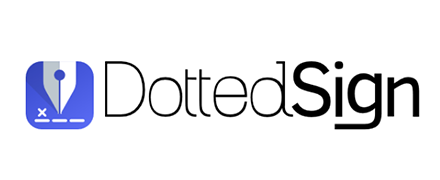How to Make a Legally Binding Contract
Contracts are the foundation of secure business and legal dealings, ensuring trust and accountability from all parties involved. In today’s digital era, it’s critical for organizations to understand what makes a contract legally binding — especially as business transactions are increasingly completed online with digital signatures.
We’re exploring the key elements of a binding contract and how cutting-edge e-signature solutions can simplify the process for your team moving forward.
Table of Contents
What is a Legally Binding Contract?

A contract represents a legally binding agreement that’s made between two or more parties. They specify the terms of the formal arrangement, including the expectations of all parties and what each will receive by fulfilling their respective obligations. This typically involves transactions, services or commitments, such as an employment contract, rental agreement, business partnership or other legal document.
Unlike non-binding agreements, a legally enforceable contract creates lawful obligations that can lead to legislative consequences if breached. Recognizing the distinction between these types of agreements is critical to safeguarding your organization’s interests long term. To effectively navigate these distinctions, consider consulting with branding experts specifically for law firms to ensure your agreements align with your professional image, and legal requirements. Read on to learn more about contracts and the requirements to be considered legally binding.
Does a Contract Have to Be in Writing?
The short answer is no: Both a written and verbal agreement can serve as a legally enforceable contract. However, while oral contracts will hold up in court in many situations, it’s by no means guaranteed. This is because they’re much more difficult to prove, making a verbal contract an inherently riskier option.
What’s more, in accordance with the Statute of Frauds, state laws may require written contracts for real estate transactions or agreements that will last for more than one year. Be sure to check your unique state regulations to identify contracts that must be written. Even if this isn’t legally required, it’s best practice to put any business agreement in writing to protect your teams and make it easier to substantiate claims in case of a contract breach.
Is a Wet Signature or Electronic Signature Better for Signing a Contract?
A written contract only becomes a binding agreement with the addition of an official signature from the parties involved. Today, organizations can sign documents with a wet signature, done manually with ink on paper, or electronic signatures, which are digital representations of their written alternative. While wet signatures are a traditional option and widely accepted, recent years have seen a fast-paced adoption of e-signatures for the speed, convenience and enhanced security they offer in digital landscapes. According to a recent study by AirSlate, the number of e-signature adopters among businesses has increased by 50%, while everyday households have added an additional 13% of adopters.
The Essential Elements of a Legally Binding Contract

A legally binding agreement is built on two fundamental elements: an offer and an acceptance. The offer specifies what one party is willing to provide, and the acceptance indicates an agreement to those terms. This must include an exchange of value, which may take the form of services, goods, money or even a commitment to provide one of the above.
While the specific factors of a valid contract can change depending on your organization’s state laws, here’s a closer look at the main elements of a legally binding contract:
1. Mutual Consent
Contracts start with mutual consent, where one party makes an offer and the other party accepts it freely — without coercion or misrepresentation. This mutual agreement is the foundation of every valid contract.
2. Clear and Specific Terms
A legal contract must have clear and specific terms that leave no room for misinterpretation, from either side of the deal or transaction. This is necessary to ensure all parties recognize and understand their responsibilities, along with what they can expect in return.
3. Consideration
A critical component of contracts is adequate consideration, where each party provides something of value. This might include money, goods, services or a promise to provide one of these in the future. A mutual exchange ensures that all invested groups benefit from the arrangement.
4. Legality
It’s imperative that the purpose and subject matter of any contract your organization enters is lawful. It’s safe to assume that contracts involving illegal activities or those violating public policy will likely not be enforceable in a court of law.
5. Legal Capacity
All parties involved in a business contract must have the legal capacity to enter the agreement. This essentially means that all associated individuals must be of sound mind and of an age where they can legally enter contracts. Keep in mind that any agreements made with minors or individuals lacking mental capacity may not be legally binding.
6. Signatures
Finally, a valid contract must be signed by the parties involved, taking into consideration any specific formalities associated with the jurisdiction or the nature of the arrangement. In regard to digital contracts, organizations can rest assured that the United States Electronic Signatures in Global and National Commerce Act of 2000 (E-Sign Act) and the Uniform Electronic Transactions Act of 1999 (UETA) have established the legal standing of e-signatures for decades.
The surge in global e-commerce and fast-paced digital transformation is now accelerating the deployment of e-signature solutions by businesses that require the signatures of third-party partners including HR, sales, accounting and legal departments across industries. A reliable and smart e-signature solution like DottedSign makes it simple to streamline the document signing and contract management process.
You can talk with our team to get started!
Sign Anytime, Anywhere
- Secure, legal, and reliable
- Effortless document signing
- Available on all devices
Capture Signatures with DottedSign!
Start NowHow Can a Contract Be Signed?
To validate a contract, both parties must sign it and solidify their agreement to the established terms and their commitment to fulfill its obligations. Traditionally, physical signatures were more common and widely accepted, but there are a few things to consider when taking this approach:
- Sign written contracts in blue or black ink for clarity and better legibility. Blue ink is a particularly good choice if you plan on making copies because it’s easy to distinguish from the original.
- Signatures can be in cursive or print, as long as there is authenticity and intent. However, cursive can be a better choice for wet signatures because they’re more distinct and harder to forge.
- After a contract has been signed, initials are a common way to acknowledge small changes or updates that are made to the document. Be sure to include the date and ensure all parties have updated copies for added security.
- Depending on your jurisdiction and the document, it can be beneficial to initial each page to confirm completeness, prevent unauthorized additions and provide additional assurance.
How to Electronically Sign a Document

As of today, advancements in technology and the rise of international business have made electronic signatures a popular and legally recognized alternative. Here are the steps to electronically sign a document:
- Choose a reliable e-signature tool: Utilize a reputable electronic signature platform like DottedSign to ensure simplicity, legal compliance and security throughout the process.
- Upload your document(s): With a dependable tool, you can start by uploading the documents or contracts that need to be signed directly into the platform. Make sure it’s in a compatible format like a PDF.
- Add signatures: Use the solution’s tools to add your e-signature or digital initials.
- Position and size: The DottedSign platform allows you to adjust the signature’s position and size, so it fits properly in the document.
- Review and confirm: Finally, carefully review your signed document to ensure accuracy, then confirm and send it. This contract is now officially electronically signed and can be shared or downloaded as needed.
Answering Legally Binding Contract FAQs
Consider the following commonly asked questions before getting started:
What is a Contract Witness?
Depending on the contract at hand, the document may not become valid or enforceable without a proper witness. This generally includes documents like wills, real estate transactions and marriage agreements, for example. A witness is essentially someone who watches you sign the agreement to verify your identity, adding a layer of security and validity to the document. This individual should be an impartial third party that’s of age, capable of confirming the signer’s identity and mentally sound.
Can You Amend a Contract After Signing It?
Sometimes, it’s necessary to make updates to an agreement after it’s been completed and signed. Fortunately, contract amendments can be used to add or delete provisions in your original agreement without invalidating the entire document. There are typically two main ways to do this:
- Make changes to an executed contract directly in the written document and have all associated parties’ initial to acknowledge the updates.
- Create an amendment agreement, or contract addendum, which is a separate document used to make one or more changes to the original agreement.
With DottedSign, your business can further safeguard against unauthorized modifications to a signed contract with robust security measures. Not only does the platform generate a comprehensive audit trail to record every action taken by signers, but it also serves as incontrovertible evidence to ensure a document’s legality. And, the implementation of AATL digital certificates guarantees a document’s integrity and completeness, so you can rest assured that the contract hasn’t been altered or modified without the proper acknowledgment.
How Do You Terminate a Contract?
You may also need to terminate a contract after it’s been completed and signed. While termination ultimately depends on the terms of the contract, there are four main options organizations can consider to dissolve an agreement:
- Check the document for a termination clause, paying close attention to requirements for written notice or potential early termination fees.
- Negotiate with the other party to work out a solution. If agreed upon, you can use a termination agreement to verify a contract’s cancellation, protect your teams and resolve any obligations outlined in the document.
- Find, and be able to prove, a breach of contract if the other party has broken the document’s terms.
- Claim the contract is invalid because one of the essential elements of a legally enforceable agreement is missing or the document’s terms become impossible to fulfill.
Leverage E-Signatures and Streamline Workflows With DottedSign
When your organization needs to sign a legally binding contract, DottedSign is your go-to solution for more efficient e-signature management. With one smart platform, you can sign, assign and manage documents securely and conveniently online. Enhance workflow efficiency and rest assured that our e-signatures are legally binding, supporting contract validity along the way.
Ready to experience the benefits of streamlined processes and advanced security with DottedSign? Take our product tour or request a demo to get started.


